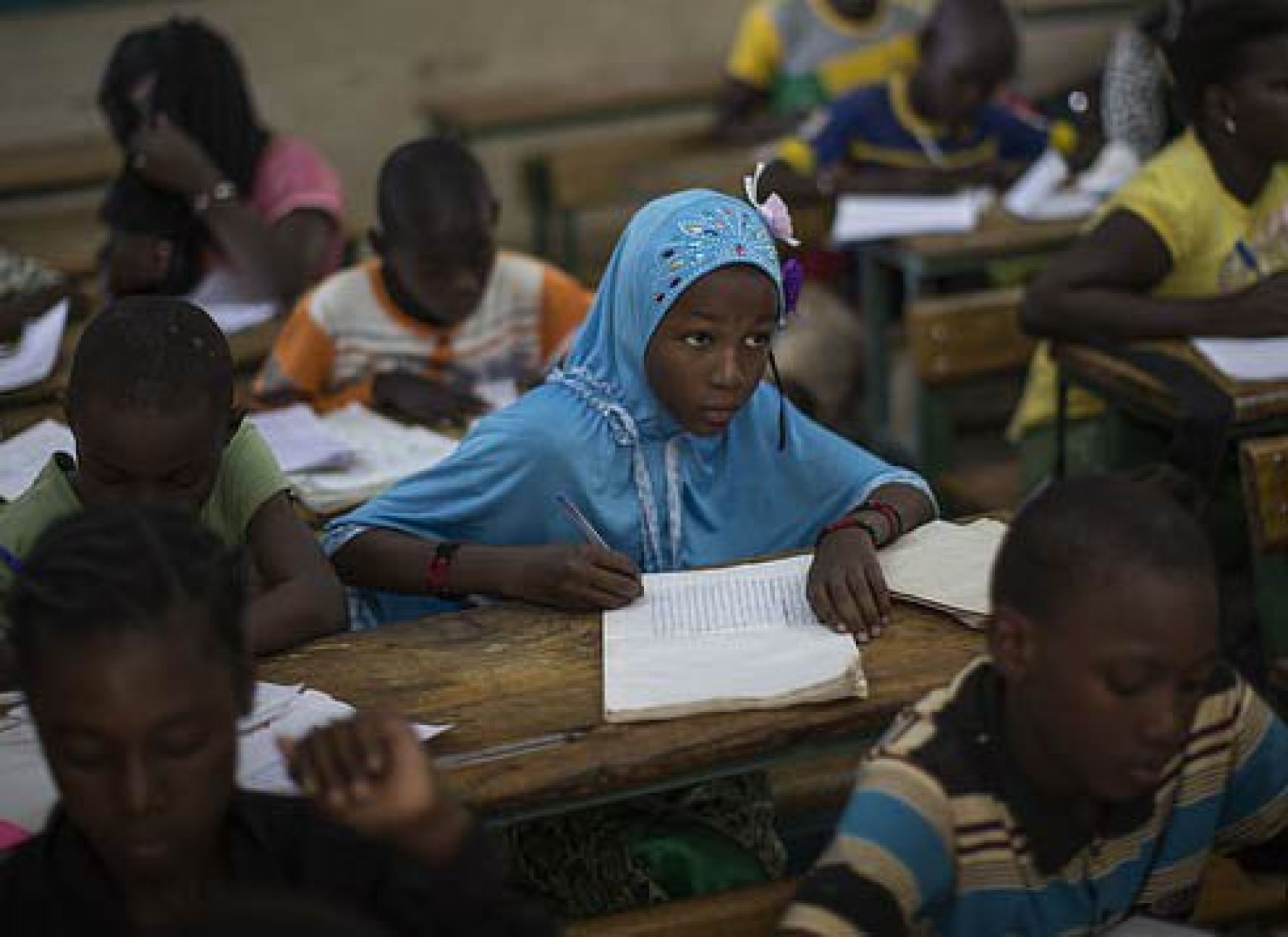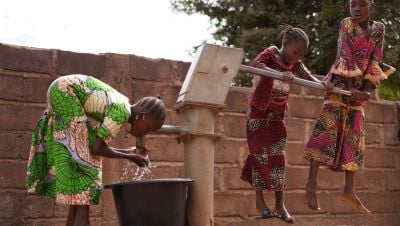According to the latest Human Development Index, people living in the very high human development countries can expect to live 19 years longer, and spend seven more years in school, than those living in the group of low human development countries.
New York, 14 September 2018 – Norway, Switzerland, Australia, Ireland and Germany lead the ranking of 189 countries and territories in the latest Human Development Index (HDI), while Niger, the Central African Republic, South Sudan, Chad and Burundi have the lowest scores in the HDI’s measurement of national achievements in health, education and income, released today by the United Nations Development Programme (UNDP).
The overall trend globally is toward continued human development improvements, with many countries moving up through the human development categories: out of the 189 countries for which the HDI is calculated, 59 countries are today in the very high human development group and only 38 countries fall in the low HDI group. Just eight years ago in 2010, the figures were 46 and 49 countries respectively.
Ireland enjoyed the highest increase in HDI rank between 2012 and 2017 moving up 13 places, while Turkey, the Dominican Republic and Botswana were also developing strongly, each moving up eight places. All three steepest declines in human development ranking were countries in conflict: the Syrian Arab Republic had the largest decrease in HDI rank, falling 27 places, followed by Libya (26 places), and Yemen (20 places).
Movements in the HDI are driven by changes in health, education and income. Health has improved considerably as shown by life expectancy at birth which has increased by almost seven years globally, with Sub-Saharan Africa and South Asia showing the greatest progress, each experiencing increases of about 11 years since 1990. And, today’s school-age children can expect to be in school for 3.4 years longer than those in 1990.
Disparities between and within countries continue to stifle progress.
Average HDI levels have risen significantly since 1990 – 22 percent globally and 51 percent in least developed countries – reflecting that on average people are living longer, are more educated and have greater income. But there remain massive differences across the world in people’s well-being.
A child born today in Norway, the country with the highest HDI, can expect to live beyond 82 years old and spend almost 18 years in school. While a child born in Niger, the country with the lowest HDI, can expect only to live to 60 and spend just five years in school. Such striking differences can be seen again and again.
“On average, a child born today in a country with low human development can expect to live just over 60 years, while a child born in a country with very high human development can expect to live to almost 80. Similarly, children in low human development countries can expect to be in school seven years less than children in very high human development countries,” said Achim Steiner UNDP Administrator. “While these statistics present a stark picture in themselves, they also speak to the tragedy of millions of individuals whose lives are affected by inequity and lost opportunities, neither of which are inevitable.”
A closer look at the HDI’s components sheds light on the unequal distribution of outcomes in education, life expectancy and income within countries. The Inequality-Adjusted Human Development Index allows one to compare levels of inequality within countries, and the greater the inequality, the more a country’s HDI falls.
While significant inequality occurs in many countries, including in some of the wealthiest ones, on average it takes a bigger toll on countries with lower human development levels. Low and medium human development countries lose respectively 31 and 25 percent of their human development level from inequality, while for very high human development countries, the average loss is 11 percent.
“While there is ground for optimism that the gaps are narrowing, disparities in people’s well-being are still unacceptably wide. Inequality in all its forms and dimensions, between and within countries, limits people’s choices and opportunities, withholding progress,” said Selim Jahan, Director of the Human Development Report Office at UNDP.
Gender gaps in early years are closing, but inequalities persist in adulthood.
One key source of inequality within countries is the gap in opportunities, achievements and empowerment between women and men. Worldwide the average HDI for women is six percent lower than for men, due to women’s lower income and educational attainment in many countries.
Although there has been laudable progress in the number of girls attending school, there remain big differences between other key aspects of men and women’s lives. Women’s empowerment remains a particular challenge.
Global labor force participation rates for women are lower than for men – 49 percent versus 75 percent. And when women are in the labor market, their unemployment rates are 24 percent higher than their male counterparts. Women globally also do much more unpaid domestic and care work than men.
Overall, women’s share of parliamentary seats remains low although it varies across regions, from 17.5 and 18 percent in South Asia and the Arab States, respectively; to 29 percent in Latin America and Caribbean and OECD countries. Violence against women affects all societies, and in some regions childhood marriage and high adolescence birth rates undermine the opportunities for many young women and girls. In South Asia, 29 percent of women between the ages of 20 and 24 were married before their 18th birthday.
High adolescent birth rates, early motherhood, and poor and unequal access to pre- and post-natal health services result in a high maternal mortality ratio. At 101 per 1,000 live births, Sub-Saharan Africa’s adolescent birth rate is more than twice the world average of 44 per 1,000 live births. Latin America and the Caribbean follows with 62 per 1,000 live births. Even though Sub-Saharan Africa’s maternal mortality ratio is 549 deaths per 100,000 live births, some countries in the region such as Cabo Verde have achieved a much lower rate (42 deaths per 100,000 live births).
Looking beyond the HDI at the Quality of Development.
There is tremendous variation between countries in the quality of education, healthcare and many other key aspects of life.
In Sub-Saharan Africa there are on average 39 primary school pupils per teacher, followed by South Asia with 35 pupils per teacher. But in OECD countries, East Asia and the Pacific, and Europe and Central Asia there is an average of one teacher for every 16-18 primary school pupils. And, while in OECD countries and East Asia and the Pacific there are on average 29 and 28 physicians for every 10,000 people respectively, in South Asia there are only eight, and in Sub-Saharan Africa not even two.
“Much of the world’s attention is on data that tells only a part of the story about people’s lives. For instance, it is increasingly clear that it is not enough simply to count how many children are in school: we need also to know whether they are learning anything. Focusing on quality is essential to foster sustainable and sustained human development progress,” concludes Mr. Jahan.
Key regional development trends, as shown by the HDI and other human development indices:
- Arab states: The region has seen a 25.5 percent increase in its HDI value since 1990. The Arab States lose 25 percent of overall HDI value when adjusted for inequalities. The region also has the second largest gender gap across all developing regions measured by the Gender Development Index (GDI) (14.5 percent gap between men and women in the HDI). Women’s labour force participation rate is the lowest among developing regions at 21 percent.
- East Asia and the Pacific: The region registered the second highest growth in HDI at 41.8 percent between 1990 and 2017. However, when adjusted for inequality, it experienced a 15.6 percent loss in HDI. While the gender gap between men and women in HDI is 4.3 percent, below the global average of six percent, women’s share of parliamentary seats remains one of the lowest among developing regions at 19.8 percent, compared to the global average of 23.5 percent.
- Europe and Central Asia: The region has an average HDI value of 0.771 – the highest among the developing regions. The region also shows the lowest overall loss in HDI due to inequality at 11.7 percent, similar to the rate of OECD countries (11.9 percent). And it registers the lowest inequality between men and women among the developing regions as measured by the GII. However, the labour force participation rate for women is still much lower than for men (45.5 versus 70.3 percent), and women only hold 20.7 of the seats in parliament.
- Latin America and the Caribbean: Latin America and the Caribbean enjoy high levels of human development, second only to Europe and Central Asia. However, when adjusted for inequality, the region’s HDI drops by 21.8 percent due to the unequal distribution of human development, particularly in income. The region has the narrowest gap between men and women in HDI at two percent, below the global average of six percent. However, it has the second highest adolescent birth rate and the labour force participation rate for women is significantly lower than for men (51.6 vs 77.5 percent).
- South Asia: South Asia experienced the fastest HDI growth among developing regions with a 45.3 percent increase since 1990. During that period, life expectancy grew by 10.8 years, as did expected years of schooling for children (by 21 percent). The loss in HDI due to inequalities is about 26 percent. South Asia has the widest gap between men and women in HDI at 16.3 percent.
- Sub-Saharan Africa: The region has seen a 35 percent growth in HDI since 1990. Twelve countries in the region are now in the medium human development group, and four countries – Botswana, Gabon, Mauritius and Seychelles – are now in the high human development group. Sub-Saharan Africa has the highest regional loss due to inequality (31 percent). Rwanda has the largest share of seats in parliament in the world held by women (55.7 percent).
Read the Human Development Indices and Indicators: 2018 Statistical Update at http://report.hdr.undp.org
Photo: UN Photo/Marco Dormino


